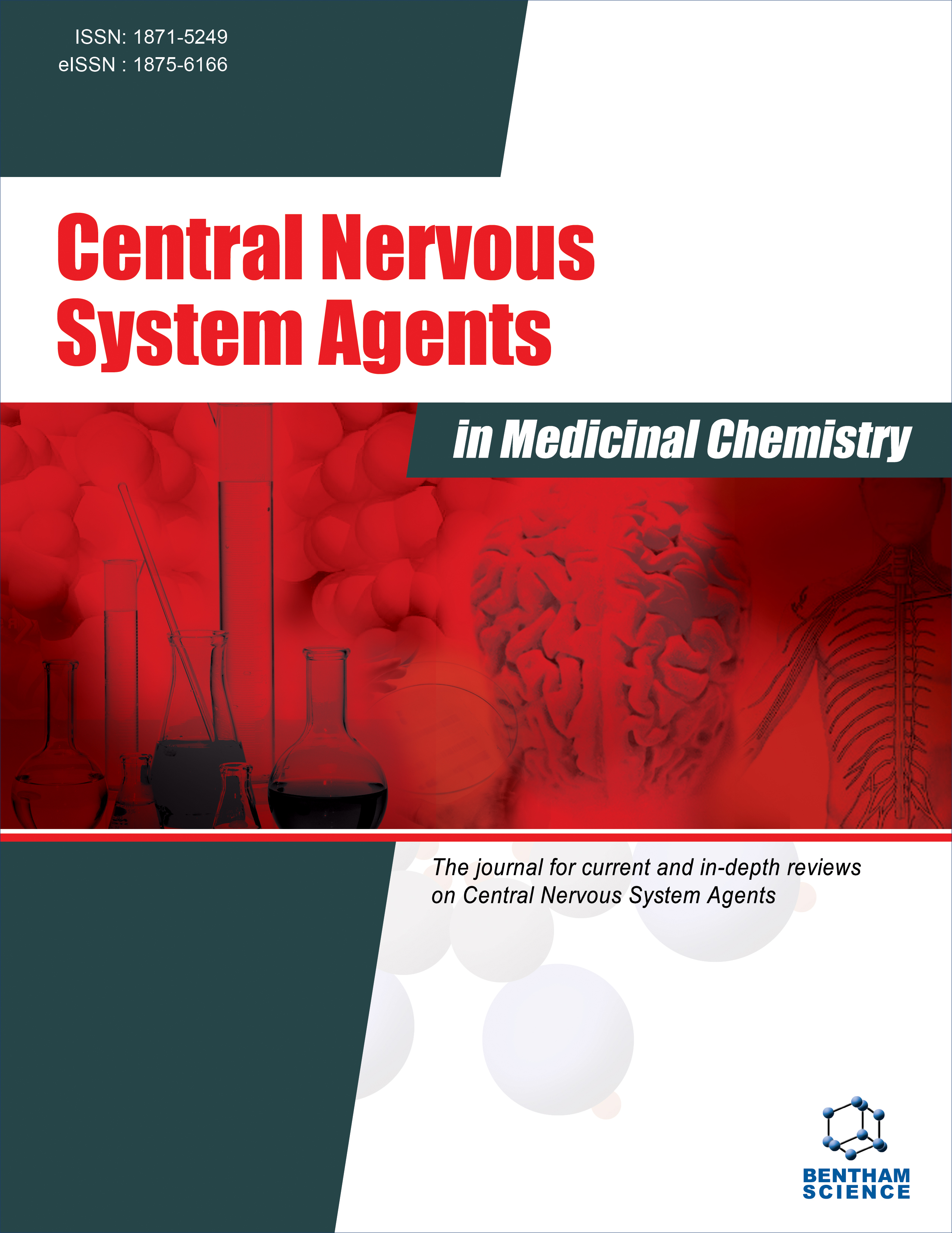- Home
- A-Z Publications
- Central Nervous System Agents in Medicinal Chemistry (Formerly Current Medicinal Chemistry - Central Nervous System Agents)
- Previous Issues
- Volume 22, Issue 2, 2022
Central Nervous System Agents in Medicinal Chemistry (Formerly Current Medicinal Chemistry - Central Nervous System Agents) - Volume 22, Issue 2, 2022
Volume 22, Issue 2, 2022
-
-
Biomedical Applications of Polyurethane Hydrogels, Polyurethane Aerogels, and Polyurethane-graphene Nanocomposite Materials
More LessBackground: The emergence of new diseases poses therapeutic challenges in modern medicine. Polyurethane hydrogels that comprise polyol, copolymer and extender could be prepared from diverse chemical compounds with adjuvants such as ascorbic acid and sorbitol, among others. Their mechano-physicochemical properties are functions of their biological activities. Therefore, there is a need to assess their therapeu Read More
-
-
-
Novel Molecular Targets and Mechanisms for Neuroprotective Modulation in Neurodegenerative Disorders
More LessBackground: Neuronal death underlies the symptoms of several human neurological disorders, including Alzheimer's, Parkinson's and Huntington's diseases, and amyotrophic lateral sclerosis and their precise pathophysiology have not yet been elucidated. According to various studies, the prohibition is the best therapy with neuroprotective approaches, which are advanced and safe methods. Methods: This review summariz Read More
-
-
-
Erythroxylum cuneatum Prevented Cellular Adaptation in Morphineinduced Neuroblastoma Cells
More LessBackground: Chronic morphine stimulates prolonged stimulation of opioid receptors, especially μ-opioid subtype (MOR), which in turn signals cellular adaptation. However, the sudden termination of the use of morphine after chronic intake causes the withdrawal syndrome. Objectives: Hence, this study was designed to find an alternative treatment for morphine withdrawal using the alkaloid leaf extract of Erythroxylum Read More
-
-
-
The Effects of Vitamin D3 and Melatonin Combination on Pentylenetetrazole- induced Seizures in Mice
More LessAuthors: Azam Hosseinzadeh, Ehsan Dehdashtian, Majid Jafari-Sabet and Saeed MehrzadiBackground: Epileptic seizures are associated with the overproduction of free radicals in the brain leading to neuronal cell death. Therefore, reduction of oxidative stress may inhibit seizure- induced neuronal cell damage. The current study evaluated the effects of Vit D3 and melatonin and their combination on pentylenetetrazol (PTZ)-induced tonic-clonic seizures in mice. Methods: Animals were divided into six groups. G Read More
-
-
-
Behavioral Pharmacology of Five Uncommon Passiflora Species Indicates Sedative and Anxiolytic-like Potential
More LessAuthors: Marna E. Sakalem, Ricardo Tabach, Miriane de Oliveira and Elisaldo Araújo CarliniBackground: There are over 500 species in the Passiflora genus, and while some of them are very well known in folk medicine for their anxiolytic effects, very little is known for the other genus representants, which could also present medicinal effects. Objective: In this study, we performed an interspecific pharmacological comparison of five investigated Passiflora species, all native to Brazil, namely P. bahiensis, P. coccinea, P. q Read More
-
-
-
In silico Study of Acetylcholinesterase and Beta-secretase Inhibitors: Potential Multitarget Anti-Alzheimer’s Agents
More LessBackground: Alzheimer's disease is a progressive neurodegenerative process with multifactorial characteristics. This disease follows the natural aging process, affecting mainly people over 65 years. Pharmacotherapeutic treatment currently combats symptoms related to cognitive function. Several targets have begun to attract the interest of the scientific community to develop new drug candidates which have better pharm Read More
-
Volumes & issues
-
Volume 25 (2025)
-
Volume 24 (2024)
-
Volume 23 (2023)
-
Volume 22 (2022)
-
Volume 21 (2021)
-
Volume 20 (2020)
-
Volume 19 (2019)
-
Volume 18 (2018)
-
Volume 17 (2017)
-
Volume 16 (2016)
-
Volume 15 (2015)
-
Volume 14 (2014)
-
Volume 13 (2013)
-
Volume 12 (2012)
-
Volume 11 (2011)
-
Volume 10 (2010)
-
Volume 9 (2009)
-
Volume 8 (2008)
-
Volume 7 (2007)
-
Volume 6 (2006)
Most Read This Month
Article
content/journals/cnsamc
Journal
10
5
false
en


